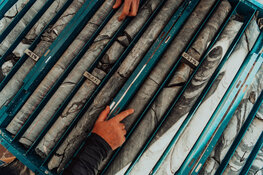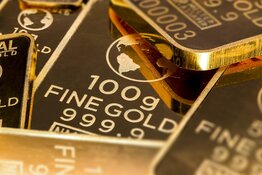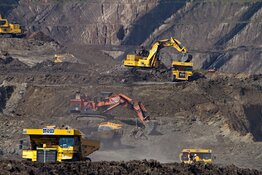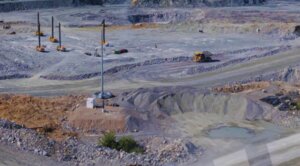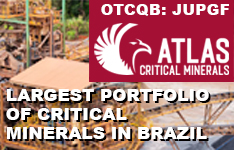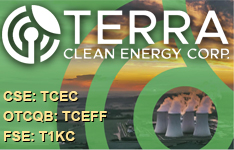Michael Berry: It's a bright day because some of the uncertainty has been removed from this issue. And servicing European sovereign debt is a big issue. Originally, the Europeans were going to allow a 21% cut in the Greek sovereign debt. Then 61% was mentioned as necessary. The French and German banks really didn't want to see even a 50% debt haircut. Most of them wanted to use their credit default swaps. It was really pulling teeth to get to this agreement. Remember one thing here: The banks are going to have to write off this amount of debt. There will be an impact; it is not a freebie.
The question is: Is a 50% haircut for Greek debt enough? There is also trouble in Italy waiting in the wings. Italy is a bigger issue because it's a much bigger country with a much bigger gross domestic product than Greece and austerity is anathema to Italians.
I predict that this agreement will not be enough and that Europe will have to do more. I think there will be more printing of money and an even larger attempt to rescue the banks. Still the markets exhaled and went euphoric: I think it is still way too early to declare victory.
TGR: The Dow Jones Industrial Average shot above 12,000 on the news and the gold price was up about $3/ounce (oz). Do you believe the news will continue to be positive for the gold price?
MB: We are still in the early days of gold's run. We have had a good pullback down to $1,575/oz. I wanted to see a pullback from the $1,900/oz level, which we achieved a little too quickly in the summer. I feel pretty confident about gold because one very tangible thing has changed: Many people have lost confidence in paper money. You just can't print this much and not have that happen. I see gold now as a very important asset in portfolios. A few years ago financial planners had no patience for a gold allocation. Now Merrill Lynch will sell you physical gold. I don't think we've even scratched the surface in terms of how many investors are going to own gold in the future. I think it will go much higher.
TGR: Are many American banks breathing a sigh of relief today on this news, given their exposure to European debt?
MB: No doubt. I suspect that bank depositors and investors are also breathing a sigh of relief. The Philadelphia Bank Index, which is made up of 13 major banks, fell 36% between May 1 and Oct. 1. Since then it has recovered 14%. I expected a bounce, but we have to wait and see how this plays out before we become too optimistic. But I'm sure that U.S. banks are pleased with the European accord. Really, though, was there any other choice?
TGR: Even though $1 trillion may not ultimately be enough, the message is that countries are willing to do what it takes to keep it together for the long haul. Is that the message you're receiving?
MB: I think so. There is obviously a strong desire to hold the Eurozone together and the euro as a common currency. Germany, the strongest economy on the continent, has stepped up. There was some question about whether the German parliament would support this accord and it did. It is going to do whatever it takes to move this forward. Of course, it could have done this earlier and headed off much of the uncertainty.
Regarding the long haul, however, it is difficult to see how the European Union can survive without a strong fiscal union as well as a currency union.
TGR: It sounds a little like the U.S. is delaying raising the debt ceiling.
MB: Yes, and what happened then? The U.S. debt was downgraded by Standard and Poor's in August. The U.S. and the European Union officials have not dealt with this the way they should have. You just cannot kick the debt problem down the road. We cannot have a major economic recovery until we have a new credit cycle. We cannot have a new credit cycle until the bad debt is eliminated. It is just that simple.
In the U.S., in particular, there was this hope that we could "inflate out," or grow out, of the problem. That has proven to be false. We have not dealt well with a stagnating, deflating economy because we have not dealt with the debt load. We still have to solve the debt problem in this country. It has gotten more severe over time.
TGR: One aspect of that debt is municipal debt. Harrisburg, Pa., recently declared bankruptcy. Is this one of the first dominos to fall?
MB: Without a doubt. Many of the state and local governments have similar problems. The only entity that can print money is the federal government—states cannot do that, cities and counties cannot do that. We are seeing structural contraction. Unemployment cannot decrease until there is a real recovery and we are not in a real recovery now. There will be more personal bankruptcies and more state and local bankruptcies as well.
TGR: Is that positive for the gold price?
MB: Absolutely. Gold has morphed into a real store of value. The "Minsky Moment" has arrived.
TGR: You recently visited several mining projects in Alaska. Its geology is similar to the Yukon Territory to the east, but Alaska receives far less attention despite several large deposits that have been found over the last decade, including Donlin Creek, which is around 42 million ounces (Moz), Northern Dynasty Minerals Ltd.'s (NDM:TSX; NAK:NYSE.A) Pebble project, which is over 100 Moz, and International Tower Hill Mines Ltd.'s (ITH:TSX; THM:NYSE.A) Livengood property, which is around 20 Moz. Those are all much larger than anything out of the Yukon during that same timeframe. Why do you suppose we don't hear as much about Alaskan discoveries?
MB: The Yukon is the new territory that everybody is interested in so there has been a lot of staking up there. It is a result of what we call the mystery/history curve. There was a lot of mystery about the Yukon. It has been relatively underexplored compared to Alaska, for example.
Senator Lisa Murkowski (R-Alaska) has been aggressively introducing critical metals legislation in the U.S. Senate on mining, not only for Alaska but other states as well. I am going to be on the dais with her this week in Washington D.C. There is a lot of renewed interest in Alaska and she's been very helpful in getting some of these mines into operation.
Coeur d'Alene Mines Corp.'s (CDM:TSX; CDE:NYSE) Kensington mine, which is north of Juneau, Alaska, and Hecla Mining Co.'s (HL:NYSE) Greens Creek mine southwest of Juneau, are good examples of a renewed interest in jobs and mining in Alaska. There is going to be a lot more interest in Alaskan natural resource development going forward.
TGR: Morning Notes (www.DiscoveryInvesting.com) is always a must-read for anyone seeking the latest on companies making discoveries that are relatively unknown. In a recent edition, you talked about Grande Portage Resources Ltd. (GPG:TSX.V) and Quaterra Resources Inc.'s (QTA:TSX.V; QMM:NYSE.A) Herbert Glacier project in Alaska where some recent drill results returned some impressive grades. Can you tell us a bit about those?
MB: It is still very early days, but Grande Portage and Quaterra have formed a joint venture to explore the vein systems discovered in 1988 by Echo Bay and the Bureau of Mines at the Herbert Glacier. Quaterra has a 35% interest and Grande Portage a 65% interest ongoing in the discovery.
Herbert Glacier itself has been receding since 1740 and it is rough territory. With the drill these two companies have made what I think could become a major discovery. There are six east-west parallel veins. They are mesothermal, so they go to depth and they appear to be very high-grade in gold and silver. There is also copper, zinc, lead and tungsten. I've been up there twice to visit it.
They have drilled about 65 holes on five of the veins. For example, in two of the holes, there's 3.05 meters (m) of 2.314 oz gold on the main vein and 1.73m of 38.8 oz silver as well as 3% zinc and lead and anomalous copper. Another drill hole returned 15.27m averaging 1.08 oz/ton of gold at depth of 137.1m.
I believe that by the end of the next drill program in June 2012, there will be a significant NI 43-101 resource.
There is now a chance Herbert Glacier could become a mine. It's a developing beauty. Remember that Juneau gold district hosted the AJ and Treadwell mines early in the 20th century. There is a lot of gold to be discovered in the area.
TGR: Whenever I hear about companies exploring around a glacier, it sends up a bit of a red flag. These kinds of things catch the attention of non-governmental organizations and environmentalists. Is that a risk with this discovery?
MB: Environmental issues are always challenges. Given the multiple layers of regulations today, exploration and mining companies have to jump through multiple hoops. However, U.S. jobs are trumping the environmentalists almost everywhere on the exploration and mining circuit in the U.S. We see it at the Revett Minerals Inc. (RVM:TSX; RMV:NYSE.A) Troy mine in Montana. We see it at the Kensington mine in Alaska, which Coeur spent several years to get into production because there was opposition.
Yes, those are common concerns and you must go through the process. But Herbert Glacier, in particular, is less of a concern. It was discovered in 1988, so it has been known for a while. Herbert Glacier will be an underground mine several miles away from the glacier. It would not likely impact the glacier at all, which continues to recede and show more vein structure at surface. I am sure Grande Portage and Quaterra will still have to jump through all the regulatory hoops. But there's a good chance this resource, if it proves large enough, will be developed because the U.S. needs jobs everywhere.
TGR: Terraco Gold Corp. (TEN:TSX.V) is developing the Almaden project in Idaho. You believe that recent drill results on that project will ultimately boost the resource, currently a little less than 1 Moz. Terraco is trading at around $0.25. What impact could a 40% boost to the resource have on its share price?
MB: Perhaps a significant impact. There is an old mercury mine on the property that was mined for 40 years through World War II and into the '70s. The shallow gold target had 887 mostly rotary air blast holes that have been drilled in it. These holes probably did not reflect the true grade of the near surface deposit. Terraco has drilled 15 core holes, and it is getting higher grades of 1–2 grams per ton (g/t). Historically, grades ran 0.67 g/t. Just from the perspective of increased grade due to core drilling, Terraco will probably increase its resource by 10–20%.
Further, one historical drill hole drilled 600 meters to the southeast of the main ore body intersected 37 feet of 0.75 g/t of gold. Therefore, Almaden is likely a much larger deposit than it has been credited for. Terraco's management is really looking for a high-grade gold feeder system by drilling to the north of the original ore body. Dr. Ken Snyder and Charles Sulfrian, who work with Terraco, are two of the foremost geologists in the world and have discovered several mines. They believe that there is a high-grade feeder system nearby.
TGR: Isn't the Ken Snyder Midas mine in Nevada?
MB: Yes. That mine was named after him. Newmont Mining Corp. (NEM:NYSE) has it now. In fact, it is one of several reasons Ken Snyder is hoping to find a similar mine at Almaden. The Ken Snyder mine was a hot springs mine where he discovered the feeder system. He thinks there is a chance that Terraco will find a feeder system at Almaden as well.
TGR: Terraco is starting to drill its Moonlight property. It is currently drilling the Black Ridge Fault zone, which is part of the Moonlight property. That fault zone could contain the mineralized extension to Midway Gold Corp.'s (MDW:TSX.V; MDW:NYSE.A) Spring Valley gold resource, which is a 4 Moz resource immediately north of Moonlight.
MB: I guess you could say Terraco's Moonlight is a call option on gold discovery. It is a very interesting play. The company is trading for $0.28 and sits directly north of Midway's Spring Valley resource. The Black Ridge Fault was never before mapped through the Moonlight property, but that has since been verified. Tom Chadwick, a well-known mapper who mapped the Black Ridge Fault all up and down northern Nevada, recently mapped it through the Moonlight property. Terraco will be drilling within a few days on its targets there. There is a very good chance that the Black Ridge Fault, the progenitor of the "string of pearls," such as the Coeur's Rochester mine in northern Nevada, will host an ore body at Moonlight just as it has for the other properties in that area. This is what Discovery Investing is all about.
TGR: You expect those results to be back in the first quarter of 2012?
MB: It should be snowing soon if it isn't already in northern Nevada. The company will try to complete 15 holes, but my guess is we won't see those results until January or February.
TGR: What other companies have made some recent discoveries in America?
MB: One Discovery opportunity that I come back to again and again, and that I've owned for a long time, is Quaterra. I just had a site visit to its Yerington property, a very large open-pittable copper discovery in northern Nevada. Yerington is a very big domestic copper district. Eventually there will be about 60 billion pounds (Blb) of copper discovered there. There are three companies there now: Quaterra Resources, Entrée Gold Inc. (ETG:TSX) and Nevada Copper Corp. (NCU:TSX).
Quaterra controls the original pit that Anaconda mined until the 1970s, and the MacArthur oxide pit. MacArthur will be an NI 43-101 "run-of-mine" resource. The MacArthur ore can be extracted, taken directly to a pad, and the oxide copper and chalcocite processed very cheaply. MacArthur, in my opinion, is the key to the entire Yerington district. It could be in production in about three years. I am uncertain whether Quaterra would ever produce it. But it's certainly a very exciting play and it does control the entire development district as a result of its potential early cash flow.
The other company high on my Discovery ranking is Revett Minerals. Revett is mining the Troy silver/copper mine in northwestern Montana. In the third quarter of 2011 Revett mined 1 Moz silver, net of copper production. It also has the world-class Rock Creek deposit a few miles to the south of Troy. Rock Creek is currently in the courts due to environmental opposition. It contains 229 Moz silver and 2.02 Blb of copper. If Revett is awarded Rock Creek, it will be a much more valuable discovery play. Remember that the state of Montana, and not Revett, is being sued by the environmentalists. This company has $20 million in cash and is generating significant cash flow each quarter with a $4 cash cost/oz on its silver production. The company produces perhaps the best copper/silver concentrate in the country.
TGR: How does an investor choose among these names?
MB: That's a very good question. A few years ago we developed and tested an investing philosophy called Discovery Investing. Its cornerstone is a 10-factor model. We have questions that we research, questions that every investor could ask, in order to grade or rank stocks from best to worst.
For example, the first thing we want to understand is the management. How good is the management track record? How well do they communicate? Do they own the stock? Are they inside buyers? A good management team is a prerequisite. It's mandatory.
Second, what is the nature of the asset? Could it be world class? We don't know yet about Grande Portage and Quaterra's Herbert Glacier, but it has a chance to be a world-class gold-silver mine. There are 10 categories of questions like these two that we review.
We will introduce software, the Discovery Investing Scoreboard, for users on the Web in January at the Cambridge House Investment Conference in Vancouver. This will enable investors to see how one company ranks relative to another company. More important the system will be very easy to use with vocabularies in English to describe investor preferences. Finally we will allow "crowd sourcing" to assist retail and institutional investors in making their decisions on each of the factors. This will be a unique database.
It will answer questions such as: Is Quaterra a better buy than Grande Portage, or is Revett a better buy? We'll rank these companies for our users in plain English phrases instead of numbers. We will allow imprecise views of all the characteristics of these companies and combine these views across users into a single ranking for the company. It should be a very useful product for retail investors who may not know any details about grades and tons and things like that.
TGR: That sounds very promising. Do you have some parting thoughts for us?
MB: In spite of all the chaos in the economy, we will eventually solve these problems. We are going to inflate out at some point in time. I can't tell you when. These stocks, the junior miners in particular, are cheap as a group. They have all been bludgeoned by sellers who fear what is happening, or perhaps what is not. There are a lot of attractive Discovery buys out there right now—very cheap stocks. Perform due diligence on these companies using the discovery grid, now is the time to be looking for these bargains. Some are 50% off their highs and they're very, very cheap.
TGR: Excellent. Thanks.
Editor's Note: This interview was conducted Oct. 27.
Dr. Michael Berry has lived in the U.S. for 38 years, but was reared in Canada. He earned a Bachelor of Mathematics degree at the University of Waterloo in Ontario, a Master of Business Administration at the University of Connecticut and obtained a Ph.D. specializing in quantitative analysis and investment finance from Arizona State University. He has specialized in the study of behavioral strategies for investing and has been published in a number of academic and practitioner journals. His definitive work co-authored on earnings surprise was published in the Financial Analysts Journal. While he was a professor of investments at the Colgate Darden Graduate School of Business Administration at the University of Virginia, Dr. Berry spent considerable time with some world-renowned geologists on the Carlin Trend. While a professor, he published a case book, Managing Investments: A Case Approach.
Dr. Berry also held the Wheat First Endowed Chair at James Madison University in Virginia, and managed small- and mid-cap value portfolios for Milwaukee-based Heartland Advisors and Chicago-based Kemper Scudder. His Morning Notes publication, distributed worldwide, provides analyses of emerging geopolitical, technological and economic trends, as well as identifying opportunities for the Discovery Investing strategy he developed. Dr. Berry has presented testimony to a subcommittee of the Natural Resource Committee and U.S. House of Representatives.
Want to read more exclusive Gold Report interviews like this? Sign up for our free e-newsletter, and you'll learn when new articles have been published. To see a list of recent interviews with industry analysts and commentators, visit our Exclusive Interviews page.
DISCLOSURE:
1) Brian Sylvester of The Gold Report conducted this interview. He personally and/or her family own shares of the following companies mentioned in this interview: None.
2) The following companies mentioned in the interview are sponsors of The Gold Report: Grande Portage Resources Ltd., Revett Minerals Inc., Terraco Gold Corp.
3) Michael Berry: I personally and/or my family own shares of the following companies mentioned in this interview: Quaterra Resources Inc., Revett Minerals Inc., and Grande Portage Resources Ltd. I personally am paid by the following companies mentioned in this interview: Adviser to Grande Portage Resources Ltd. and Terraco Gold Corp.


